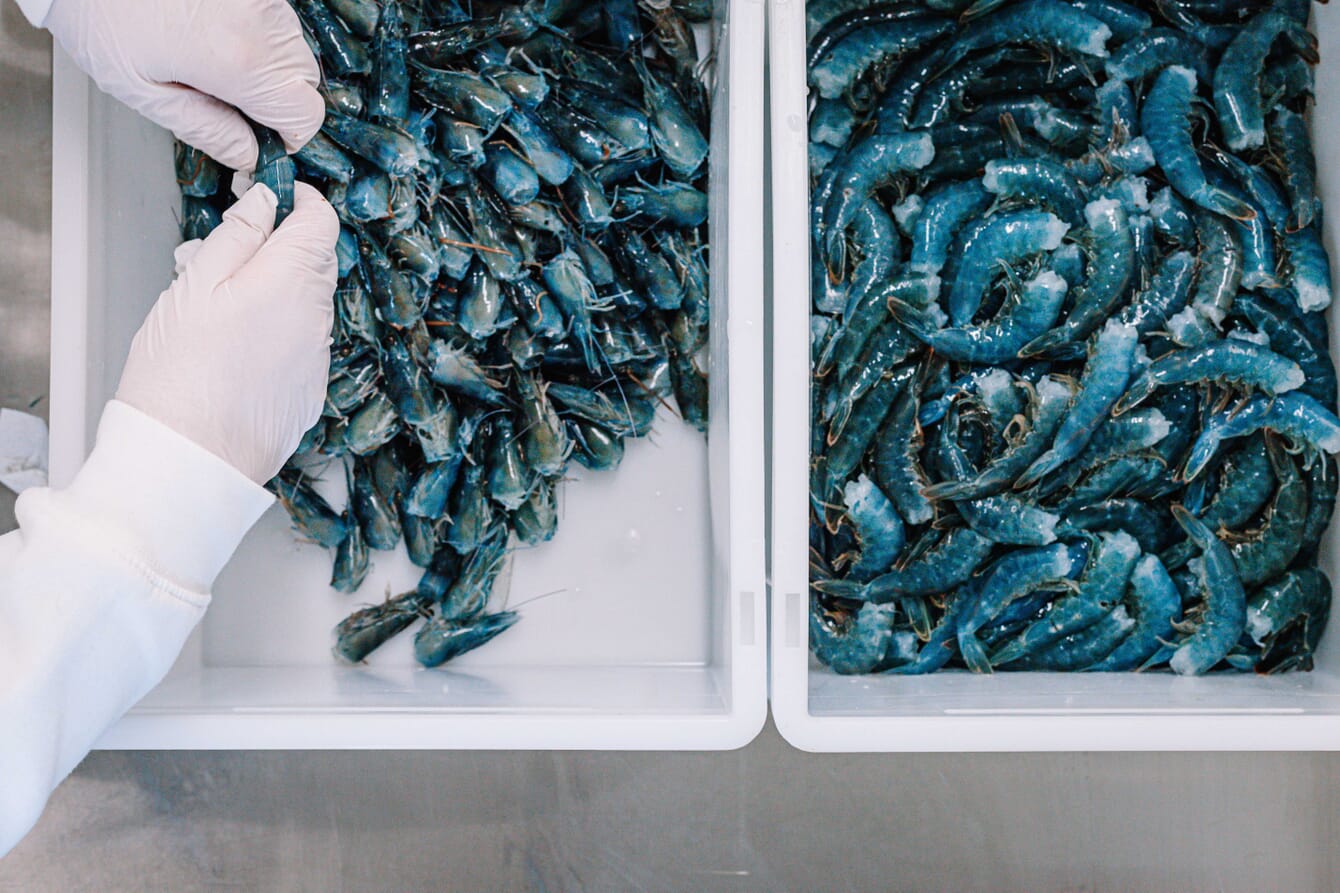
AquaPurna aims to use innovative RAS technology to produce high quality whiteleg shrimp for European markets. The vibrant blue colour results from the use of crystal clear water, paired with a dark tank interior. © AquaPurna
Can you tell me a bit about your background and what inspired you to set up an indoor shrimp farm, in Europe?
So, the most important point here is that my co-founder Florian Gösling and I don't have a background in aquaculture or biology, which we find helps tremendously. A lot of farms in Europe have been started by people who are part of the industry with a biological aquaculture background, or who have worked previously in similar farms. From what we have experienced, coming from outside the industry helps us to challenge the status quo.
We saw a lot of practices with shrimp RAS that have been around for ages, and no one really questions those. That is your first task if you don't come from the industry - to question those practices. Thats what we have been doing - looking from an outside perspective and bringing ideas from other industries to the table.
Florian and I bring a lot to the table from that perspective. I am a lawyer by profession, and we didn’t have a module on shrimp aquaculture when I was at university, you know. My background is in venture capital, financing, and tech startups, and I have a very strong business-case perspective, so I think I know what is needed to make the project advance at each stage. This is a very different approach compared to coming to it from a sector specific angle.
Florian is a very brilliant engineer, coming from the automatisation industry, so he has done a lot of robotics and fancy engineering which, when you are talking about a farm setup that mainly involves technology, is super important. When you look at other farms in Europe, you very rarely see engineers or similar professions, its mainly biologists, and when you are working with RAS technology, there must be a symphony of biology and RAS technology.
The initial spark for Aquapurna came when Florian visited India, and he was travelling through a region where shrimp aquaculture was everywhere. He was describing it to me, and there was pond after pond to the horizon with quite a strong smell and all of it going into the ocean. The initial spark came when we thought that there must be a more technologically advanced way of doing it, and looking at Europe there were some cases of shrimp farms successfully operating, but we thought that we need to do it in a more cost-efficient way in order to make it a scalable case.
We looked at worldwide technology suppliers for large scale shrimp RAS, and we found that no one is capable of selling a large-scale shrimp RAS with proven numbers off-the-shelf, so we thought “let's do it ourselves.”
Additionally, almost all of the shrimp in Europe is imported and travels long distances with generally low quality. Especially in central Europe, the customer is becoming more conscious of the product, and for almost every other protein there is the option to have an organic or local choice, but not for shrimp, despite it being a very popular seafood. So, it is our ambition to develop a system that can produce shrimp at a cost that is desirable for the retail market.
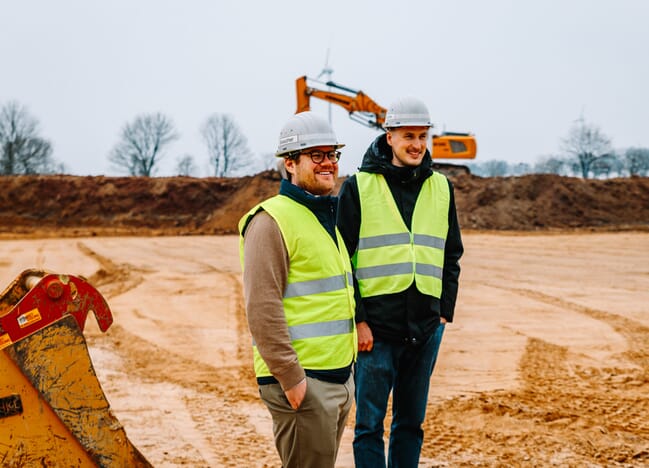
© AquaPurna
What were the key lessons you learned from your pilot farm and how will the new farm build on these?
In these last five years we have moved from lab-scale to our commercial prototype, and I think that the biggest lesson is that, even with decades of experience with shrimp RAS, you need to have room to try out new things and to validate new technologies. You also need to have the correct partnerships in place, and these take time to build. If you are following unwritten rules, for example density wise or with how much power the system can consume, you must challenge it. This is what we have done for five years.
It is a huge challenge. As an engineer, if you have an assumption, you can test it and know the outcome quickly, but with shrimp you have to test batch after batch, and things can happen suddenly. So all the trials took a lot of time, a lot of money, and sometimes led to failed assumptions, but you shouldn’t be afraid of this, as in the end it paid off.
What we have achieved with our commercial prototype is to decode what shrimp need in high density environments, and we have proved it through batch after batch, removing as many layers of risk as possible before we even considered scaling up. We looked super deep into the water chemistry, developing our own salt premix dedicated to shrimp aquaculture without ocean access.
All of the biological trials are useless, however, if you don’t understand the technology. If you just setup a farm without fully understanding the technology, you will have trouble scaling it up – I guarantee it. Through our pilot we really know every screw and every pipe by name because we have built it all ourselves. So, every incident that happens, and there are countless incidents, you must know what you are doing, and you must experience it yourself.
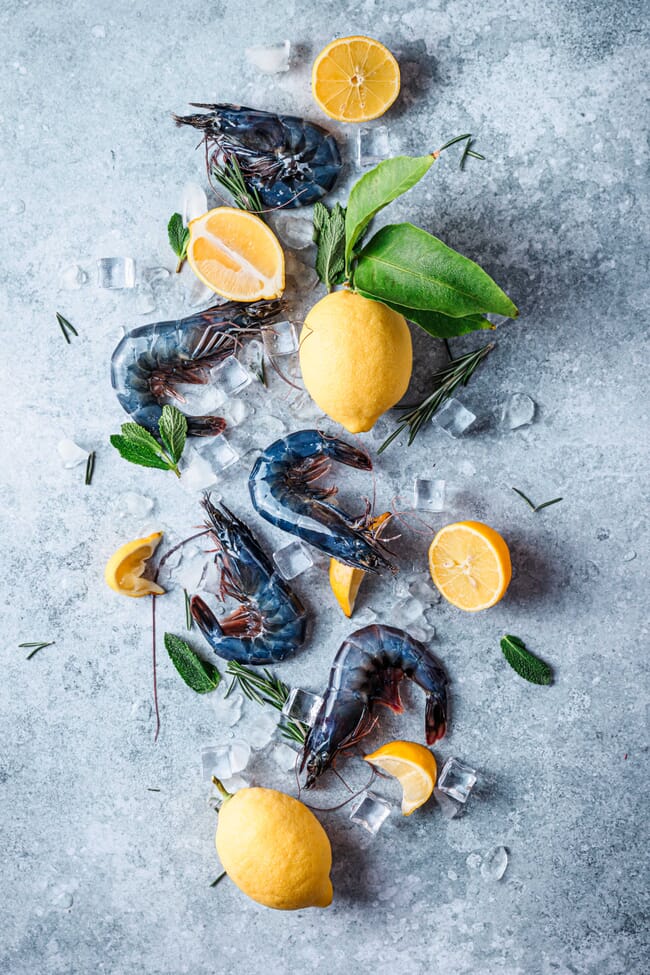
David emphasises that the extensive trials leading to the commercial prototype gave them an intimate knowledge of their shrimp and their requirements © AquaPurna
How are you dividing responsibilities with K+S and who are the key players in each of your teams?
K+S is one of the largest salt and potassium mining companies in the world, it's like an industry dinosaur. They have fantastic mining sites all around the world with top notch infrastructure. They know how to scale large infrastructure projects. For example, in Canada they have just opened one of the largest Potassium mines worldwide, which has taken a long time to get into production.
With this partnership we are able to scale up much quicker because we have access to possibilities that others don't site wise, and also in terms of support and avoiding common pitfalls. When you have a partner that has experience, you can avoid a lot of those pitfalls and save time and money.
They have their own labs and know salt in and out - which is important, of course, when you are dealing with a saltwater species - and a lot of the mineral products on the market are not dedicated to shrimp RAS, as the industry is too small. Together with K+S we are developing and testing several of those.
What challenges have you faced so far in the development of the farm?
The most obvious one is the ongoing crises that are occurring in the world. We started directly when Covid hit, and when we called our soon-to-be investors to ask how they viewed the situation, the answer was that they didn’t know if the world economy would be in place in a few months.
Then of course the Ukraine war started, and energy prices have spiked. Energy prices here in Germany have gone up, and at the same time a lot of what we are trying to do is dedicated to reducing the power consumption of the farm. There was a lot of uncertainty but, in the end, you have to be stoic to overcome that.
Governmental approvals, of course, can also go very slowly, but we don’t have a lot of influence on that, so it can just bug you as an entrepreneur. And as I said, research projects leading into the void was a challenge, along with working with many stakeholders. Having multiple technological partners, site developers, civil constructors, in addition to the research and hatchery teams managing those simultaneously is a challenge.
We also encountered a lot of investor scepticism in the aquaculture industry, because it hasn't been easy for the industry over the last few years, and we have the feeling that quite a lot of large investors are looking at the sidelines of the industry. Which isn’t a bad thing necessarily.
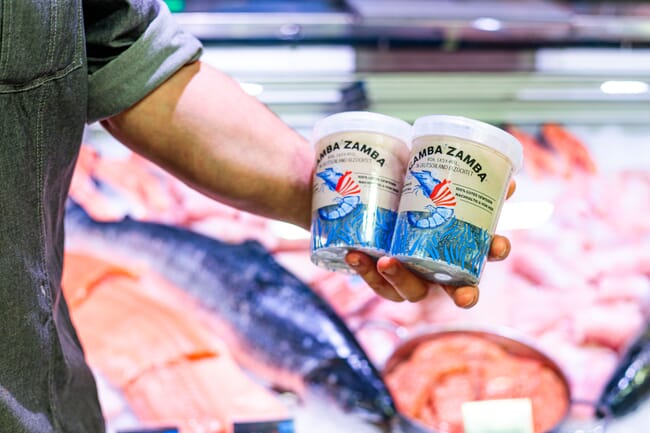
© AquaPurna
What achievements have you made so far in the project?
At the end of the day, it comes down to positive unit economics - that's the holy grail - and I am fairly confident that we have the lowest replicable production costs for shrimp RAS in Europe.
We are very proud that we provide premium high-quality products. Every retailer or wholesaler we have is amazed by the production quality. Actually, that is the most important part. It’s fantastic when customers are calling you up about how they love the product and how great it is to have shrimp from a local source. It's very satisfying, as sometimes you can be very apart from the real world, but getting this feedback is very gratifying.
Considering the challenges that I mentioned, we are very proud that we have entered into the scaling phase despite the really rough economic climate. Obviously it is not objective, but I think there could definitely be easier times to start a project like this.
How are you funding the project, and will you be looking for more funding?
We did not use project financing, where you would come up with an idea or project and then raise a large amount of money one time. We used different financing rounds growing in size, and in the end, we had multiple equity investments coming from VCs, other founders or executives from the retail, food manufacturing, and finance industries.
How do you see the project developing in the years ahead?
Again, we are not a fan of overambitious announcements, but we want to grow as sustainably as possible at a reasonable pace with the right milestones and strong partnerships. We know that this development and expansion can take years, so it's important to start as early on that as possible.
I like the comparison with the huge salmon corporations, which were not overnight successes, but grew at a very reasonable pace to where they are today.
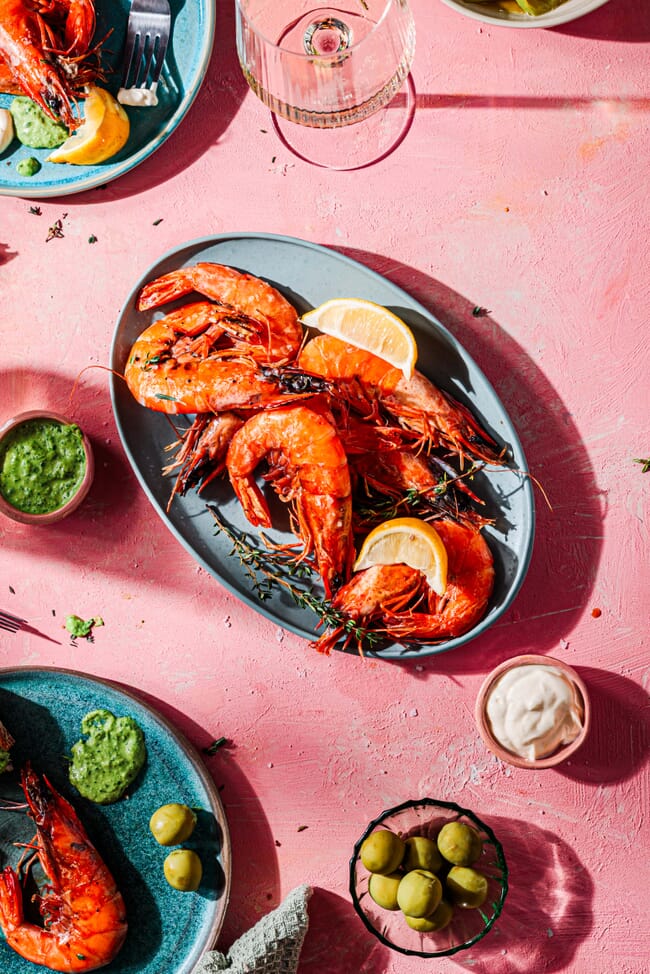
© AquaPurna
How long do you think it will take for the project to become profitable?
Obviously, I won’t get into detail regarding that, but I will say that we want to have a large-scale proof of concept from an economical point of view as fast as possible.
What will be the main markets for your shrimp?
I think for the first instance, we will focus on the European markets such as Germany, Austria, and Switzerland. We want to establish our brand with a very strong operation. In Germany there is no dedicated brand for shrimp, people buy it, but there is no dedicated brand for it such as there is for spices or other foods, so that is our goal to begin with: to establish that.




